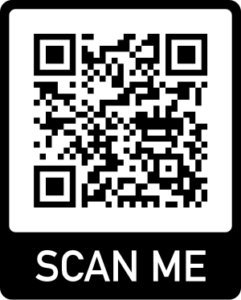In recent years, the concept of work has undergone a significant transformation. With the rise of technology and the changing demands of employees, businesses have been forced to adapt to new work models. One such model that has gained popularity is hybrid work, where employees have the flexibility to work both in the office and remotely. This shift has brought about the need for new task management strategies to ensure seamless collaboration, productivity, and efficiency. In this blog post, we will discuss the evolution of task management strategies as businesses adapt to hybrid work models and provide tips for remote collaboration, maintaining productivity, and leveraging technology to bridge the gap between in-office and remote teams.
1. Remote Collaboration
One of the biggest challenges faced by businesses transitioning to hybrid work models is ensuring effective collaboration among team members who are physically separated. To overcome this challenge, it is important to establish clear communication channels and encourage regular interaction.
Here are some best practices for remote collaboration:
- Use video conferencing tools: Video conferencing tools like Zoom, Microsoft Teams, or Google Meet can help facilitate face-to-face communication and create a sense of connection among team members.
- Encourage regular check-ins: Schedule regular check-ins with team members to discuss progress, address any challenges, and provide support. This can be done through virtual meetings or one-on-one video calls.
- Utilize collaboration software: Collaboration software like Slack, Trello, or Asana can help teams stay organized, track progress, and collaborate on projects in real-time.
- Promote a culture of transparency: Encourage team members to share updates, challenges, and ideas openly. This can foster a sense of trust and collaboration, even when working remotely.
2. Maintaining Productivity
Another important aspect of hybrid work is maintaining productivity. With the flexibility of remote work, employees may face distractions or difficulties in managing their time effectively. Employers and employees need to work together to establish strategies that promote productivity and ensure that tasks are completed efficiently.
Here are some tips for maintaining productivity in a hybrid work environment:
- Establish clear goals and expectations: Clearly communicate goals, deadlines, and expectations to employees. This will help them prioritize tasks and stay focused.
- Encourage a structured work routine: Establishing a structured work routine can help employees maintain a sense of normalcy and create boundaries between work and personal life.
- Provide the necessary tools and resources: Ensure that employees have access to the necessary tools, software, and resources to perform their tasks effectively. This may include providing laptops, software licenses, or training.
- Encourage breaks and time-off: Remote work can sometimes blur the boundaries between work and personal life. Encourage employees to take regular breaks and time-off to avoid burnout and maintain productivity.
3. Leveraging Technology to Bridge the Gap
Technology plays a crucial role in bridging the gap between in-office and remote teams. It enables seamless communication, collaboration, and task management, regardless of physical location. By leveraging technology effectively, businesses can ensure that their hybrid work models are successful.
Here are some ways to leverage technology for effective task management:
- Cloud-based storage and document sharing: Use cloud-based storage solutions like Google Drive or Dropbox to store and share documents. This allows team members to access files from anywhere, collaborate in real-time, and avoid version control issues.
- Project management software: Implement project management software like Jira or Basecamp to track tasks, assign responsibilities, and monitor progress. This provides transparency and accountability among team members.
- Automation tools: Explore automation tools like Zapier or IFTTT to streamline repetitive tasks and save time. This can help improve efficiency and productivity.
- Virtual whiteboards and collaboration tools: Use virtual whiteboards and collaboration tools like Miro or Microsoft Whiteboard to facilitate brainstorming sessions, idea sharing, and visual collaboration.
In conclusion, the evolution of task management strategies in a changing workforce is essential for businesses to adapt to hybrid work models successfully. By focusing on remote collaboration, maintaining productivity, and leveraging technology, businesses can bridge the gap between in-office and remote teams, ensuring seamless collaboration, increased productivity, and overall success.




